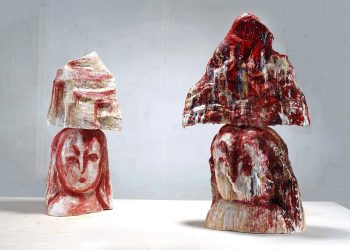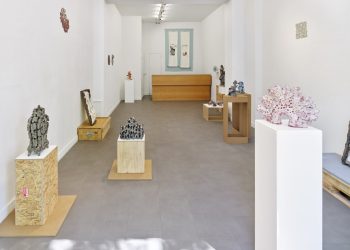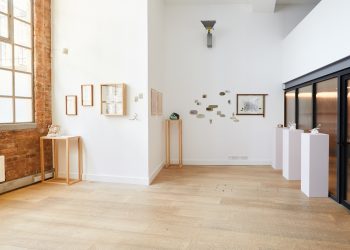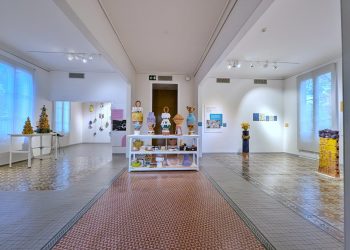Playroom / Changing room / Kinky are on view at Benyamini Contemporary Ceramics Center, Tel Aviv
March 2 – April 29, 2023
Roy Maayan & Erez Maayan: Playroom
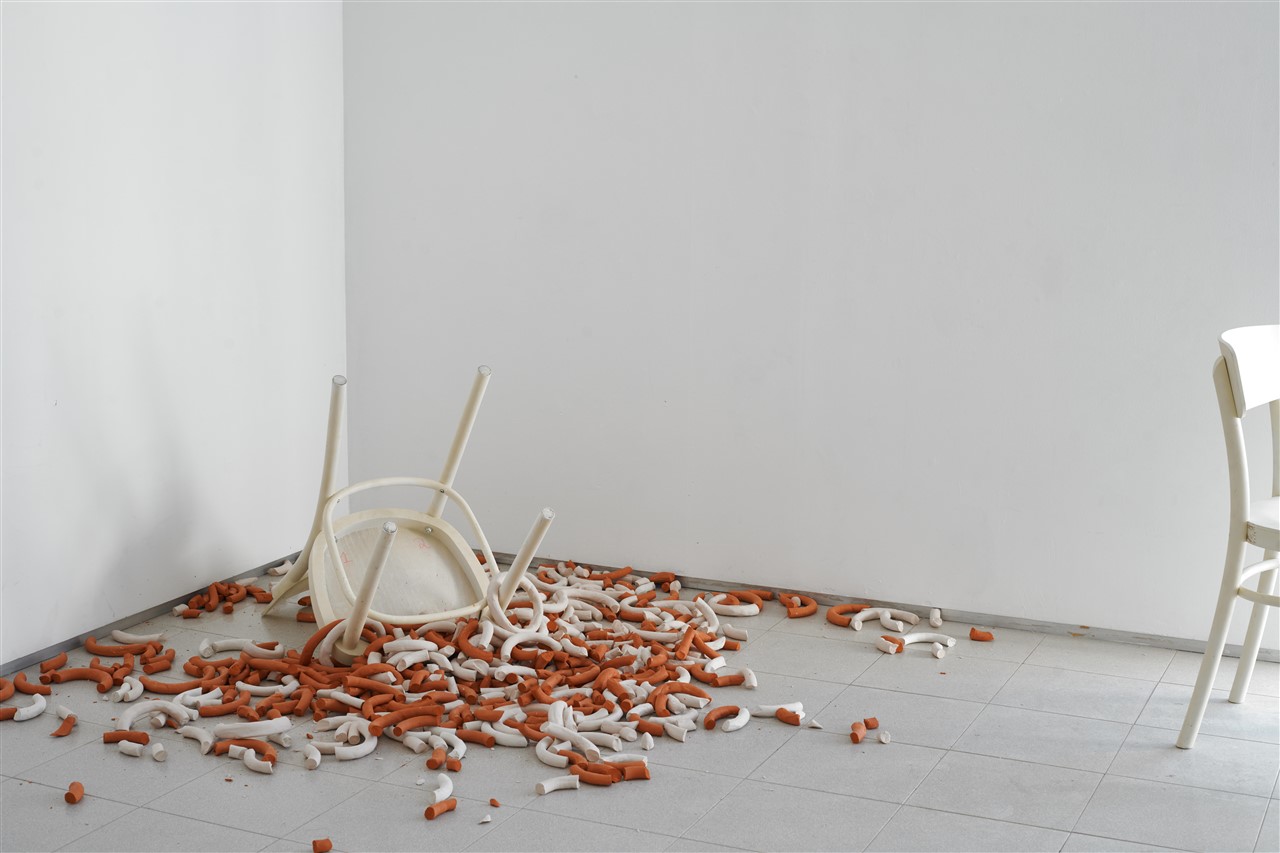
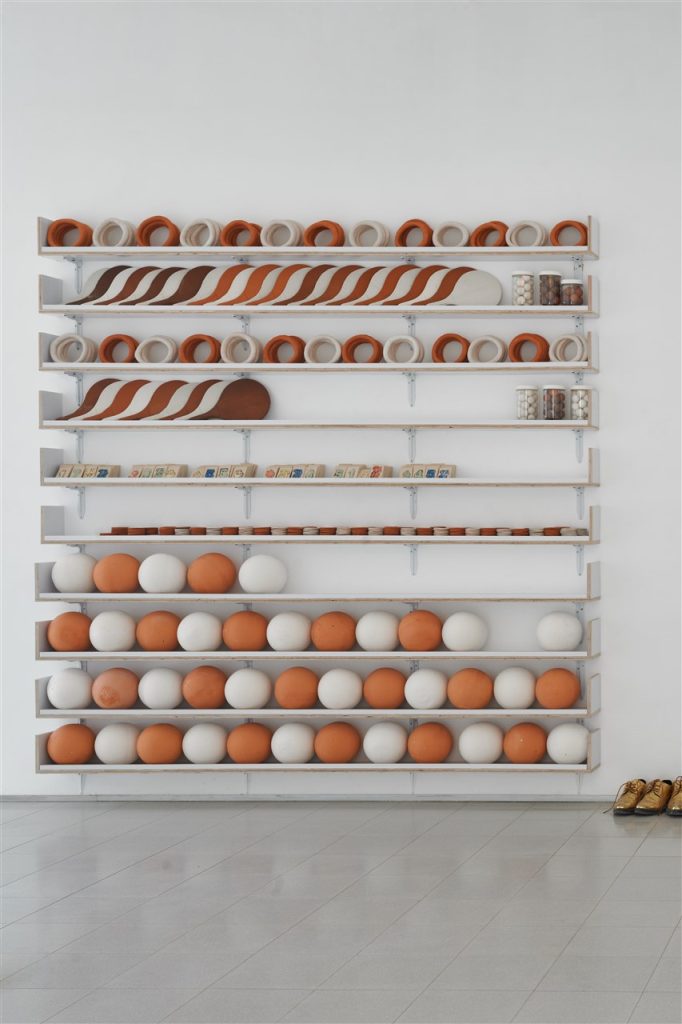
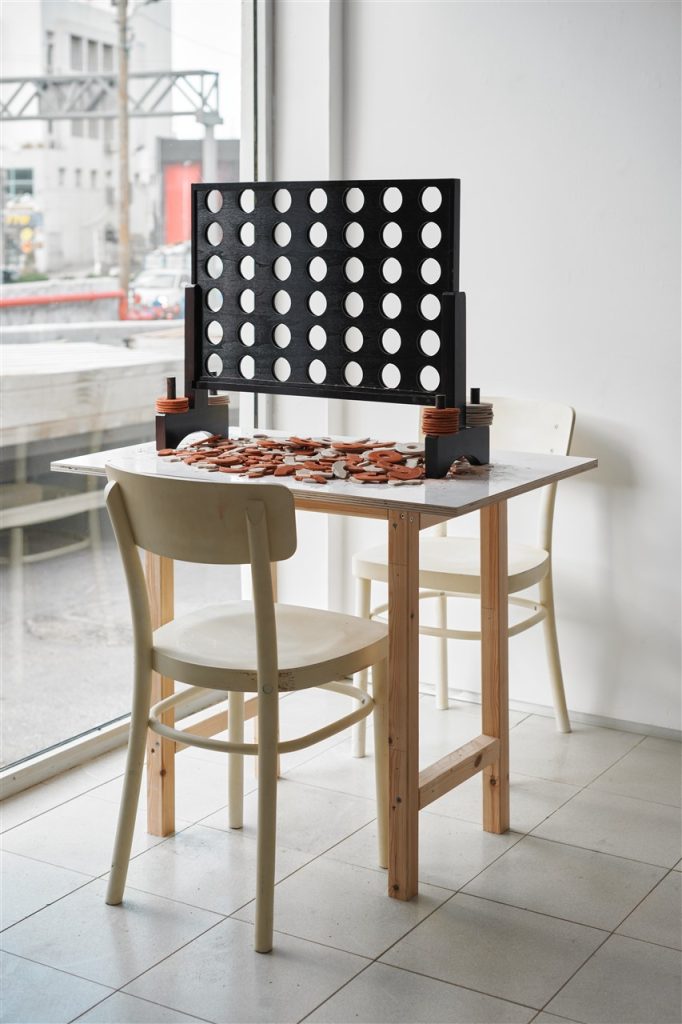
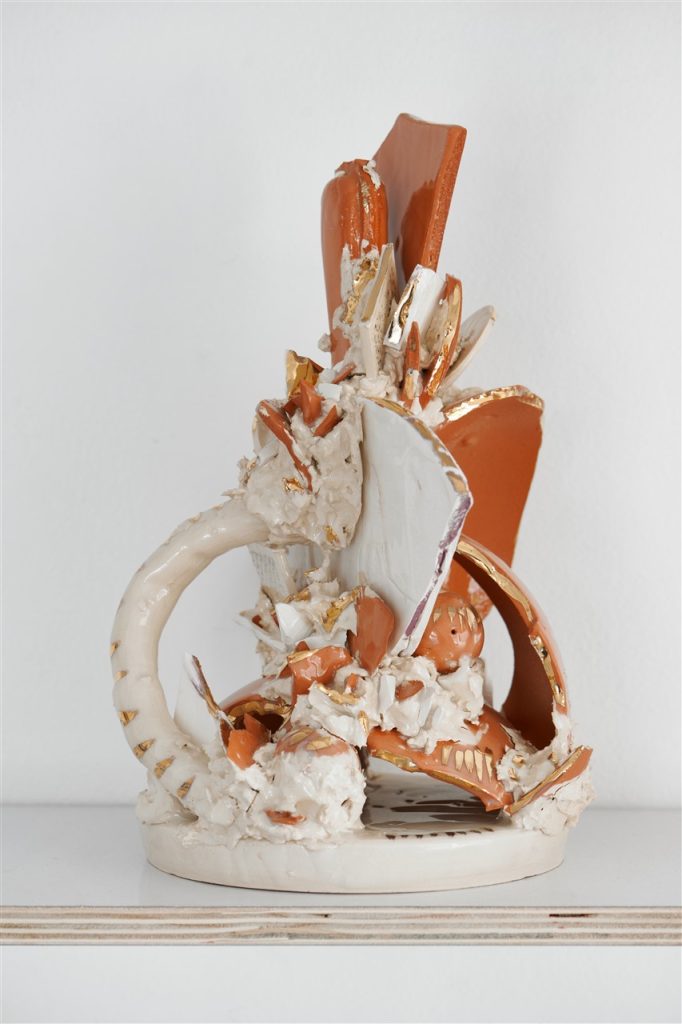
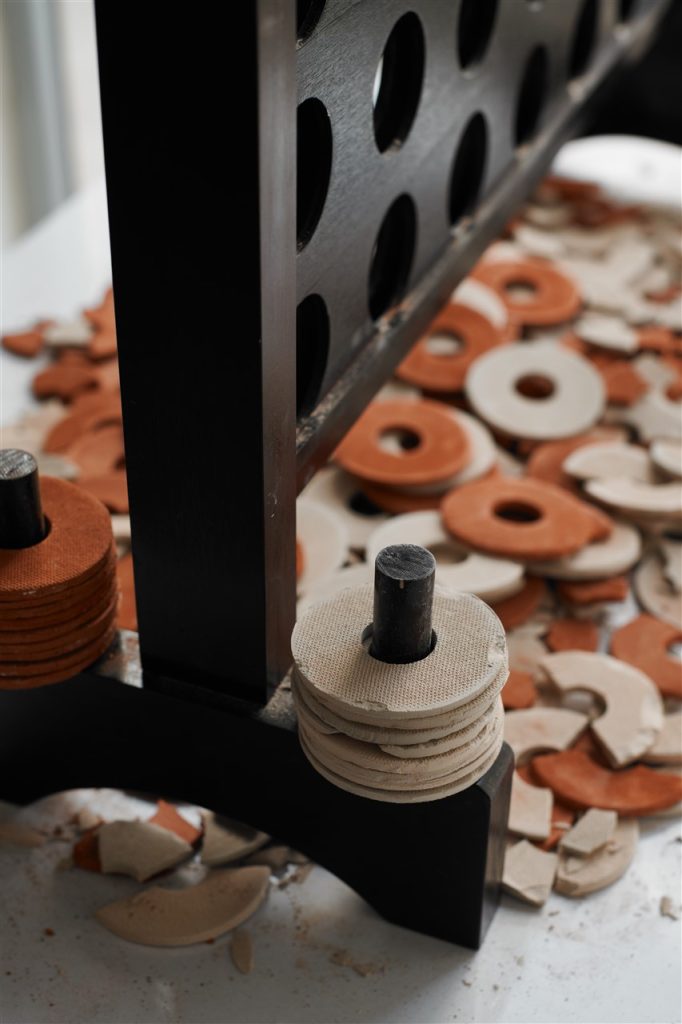
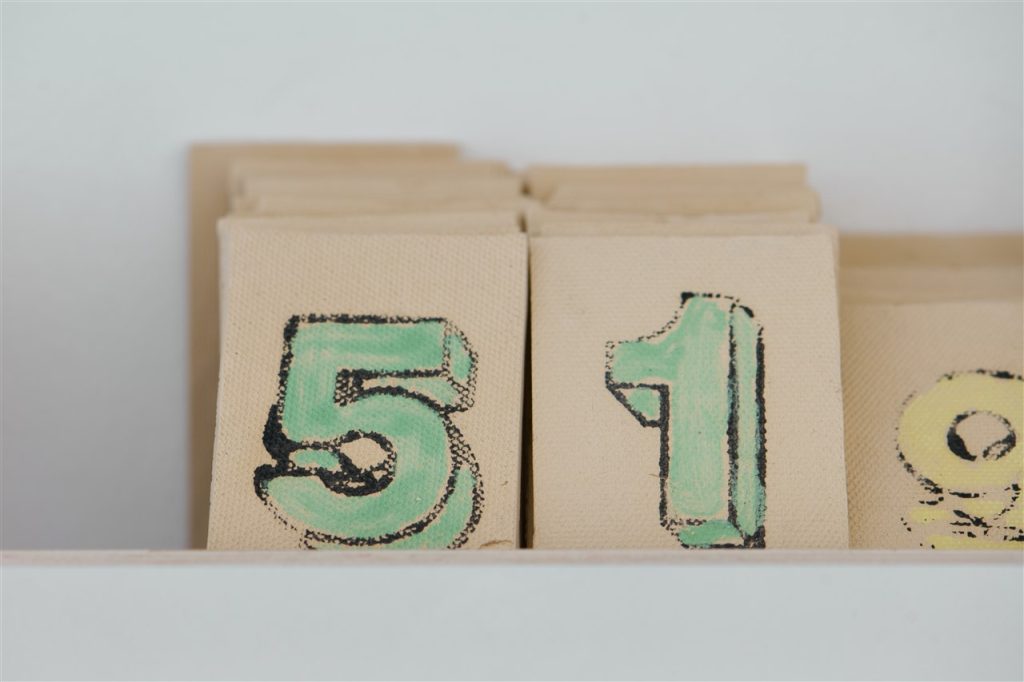
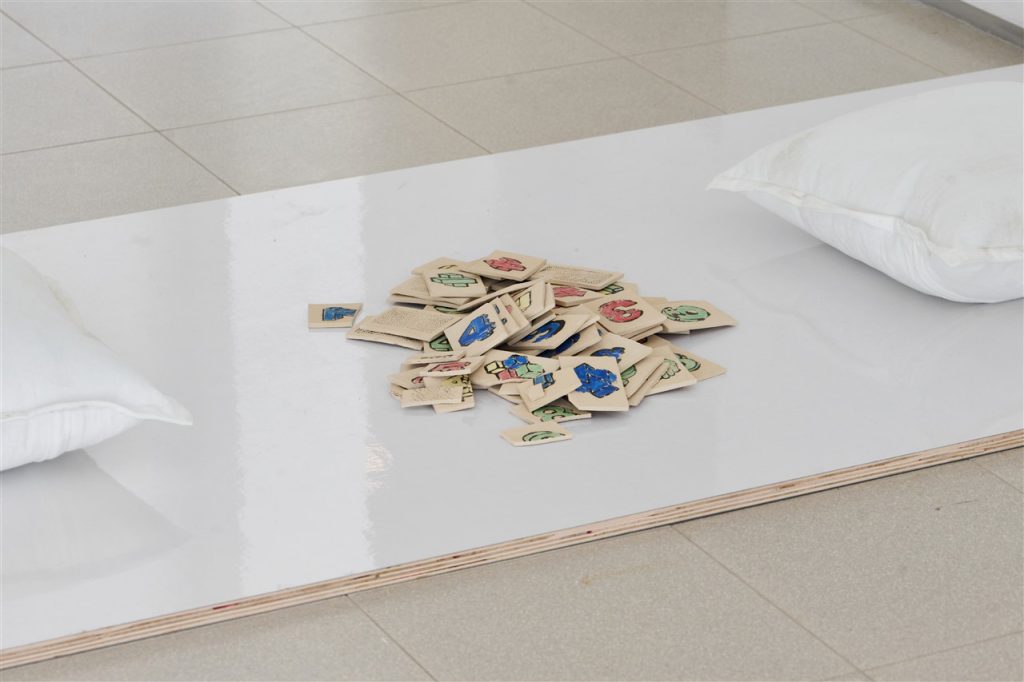
Curator: Liav Mizrahi
The exhibition “Playroom” of the artists/brothers Roy Maayan and Erez Maayan is an invitation to join the game and create a biographical memory that is mixed with childhood memories of the artists and the memories of the participating public. In children’s rooms in the early 80s before computer and tv games, one found games that developed a rich imaginary world but also competitiveness that often led to crises in the relationships of the participants. Brothers and sisters and family members played together and improvised the playing space. The competition as well as the dream family and the shattered dream are part of the baseline for the exhibition “Playroom”.
Five games were selected for the exhibition to include the audience: Four in a row, playing ball, throwing hoops, TAKI cards and ping-pong. These games are the basis for the allegory of the relationship which the artists raise as feelings in delicate family dynamics.
The exhibition invites action, relationships that are broken and rebuilt. During the exhibition, the public is invited to register to participate in a childhood game that is transformed from the original materiality of the game into a rigid cast material. The game becomes a fragile object, and the shards will be collected and combined into a new object, an abstract totem that is a metaphor for the dynamics of the participants.
Roy Maayan (ceramic artist) and Erez Maayan (performance artist) have for many years created an interdisciplinary practice of ceramic performance as part of a long-term research project that bridges high and low, object and action, material and non-material, technical and interpersonal, art and life. Their joint creativity has been applauded in Israel and abroad, they have presented and won awards in some of the most prestigious art events in the world and their work can be found in museum and private collections as well as the basis for research and writing.
Dana Yoeli & Agi Yoeli: Changing room
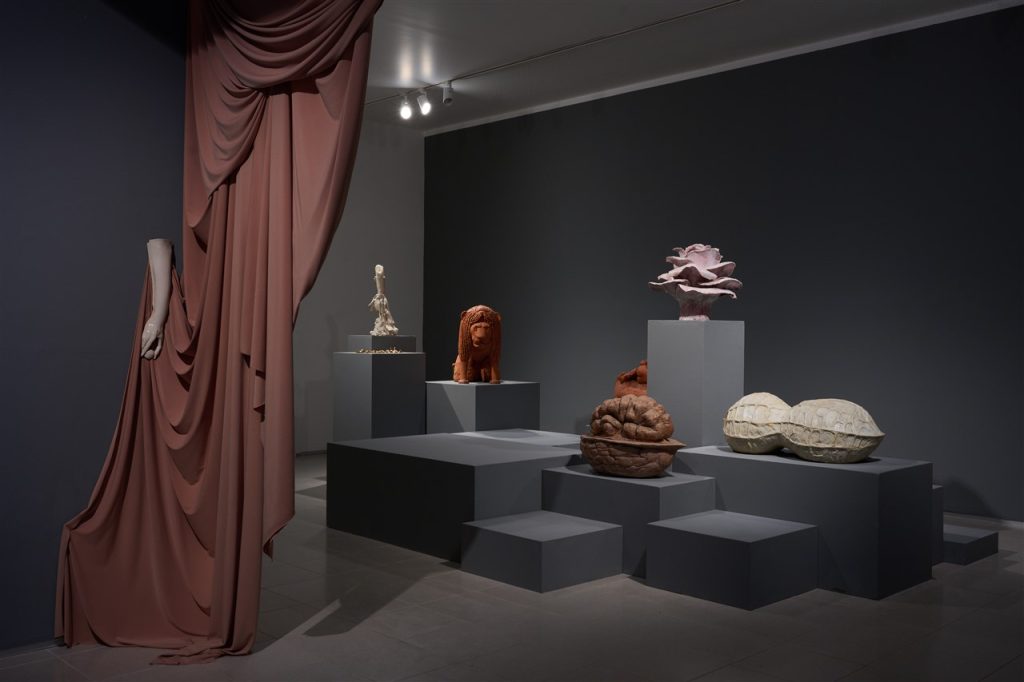
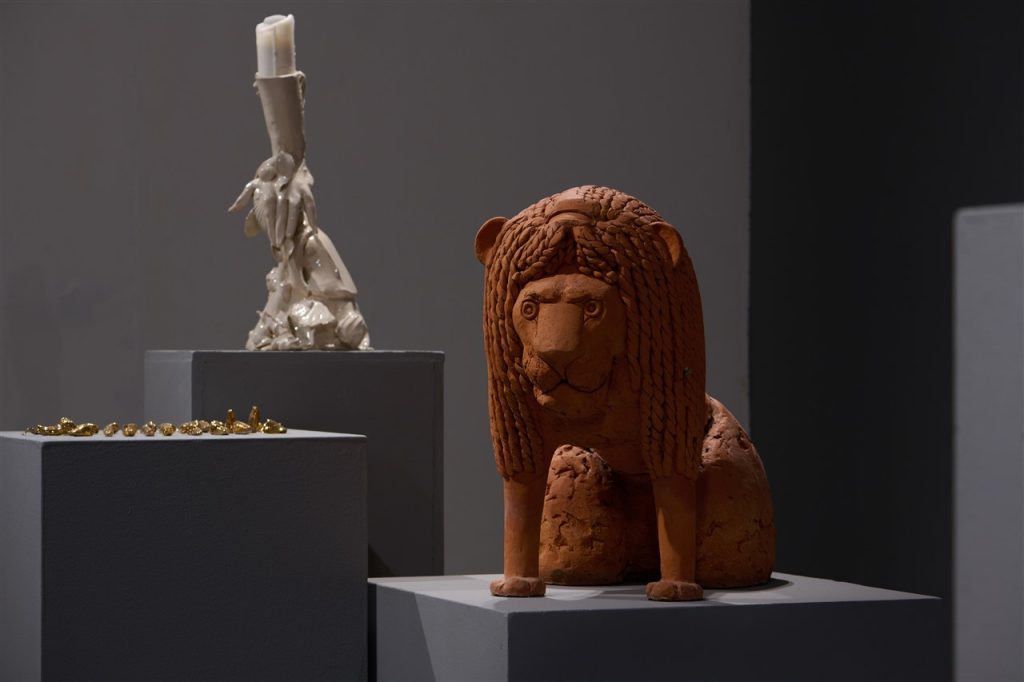
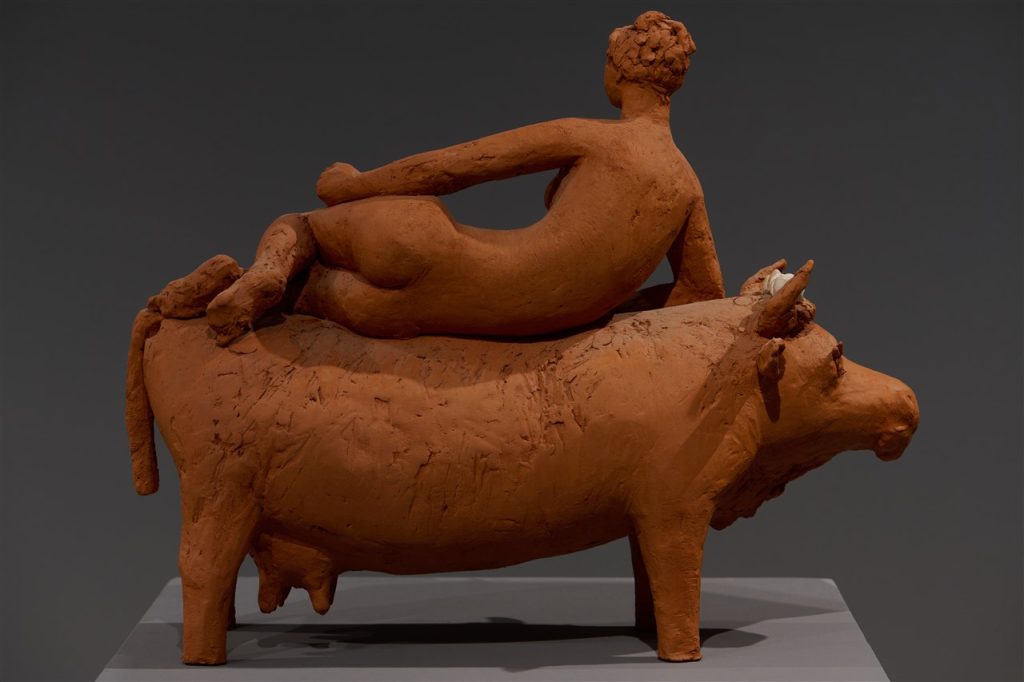
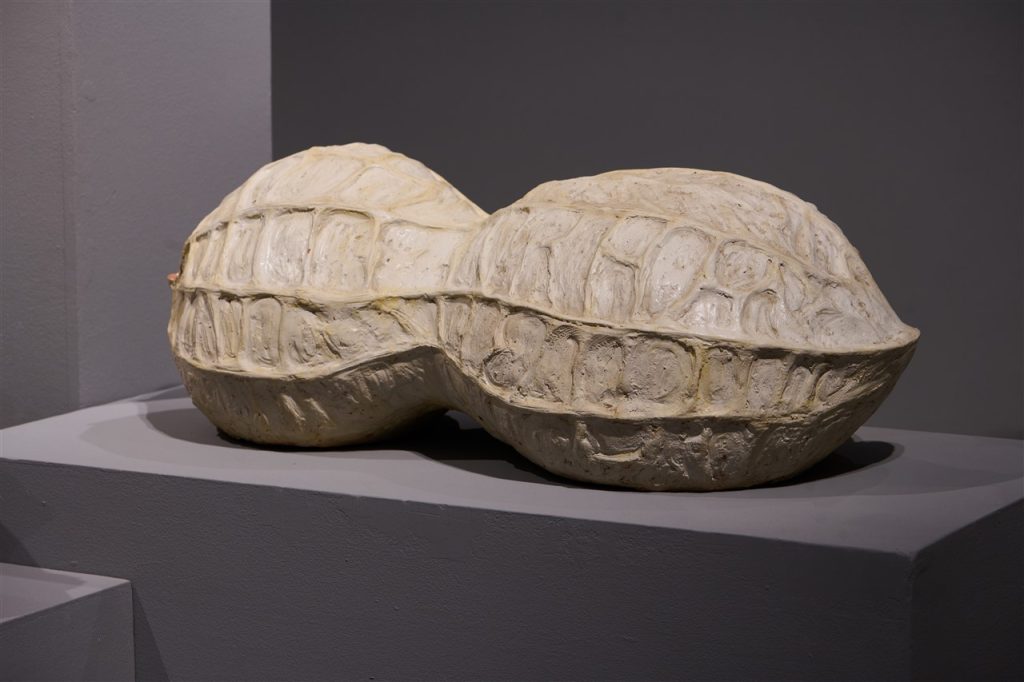
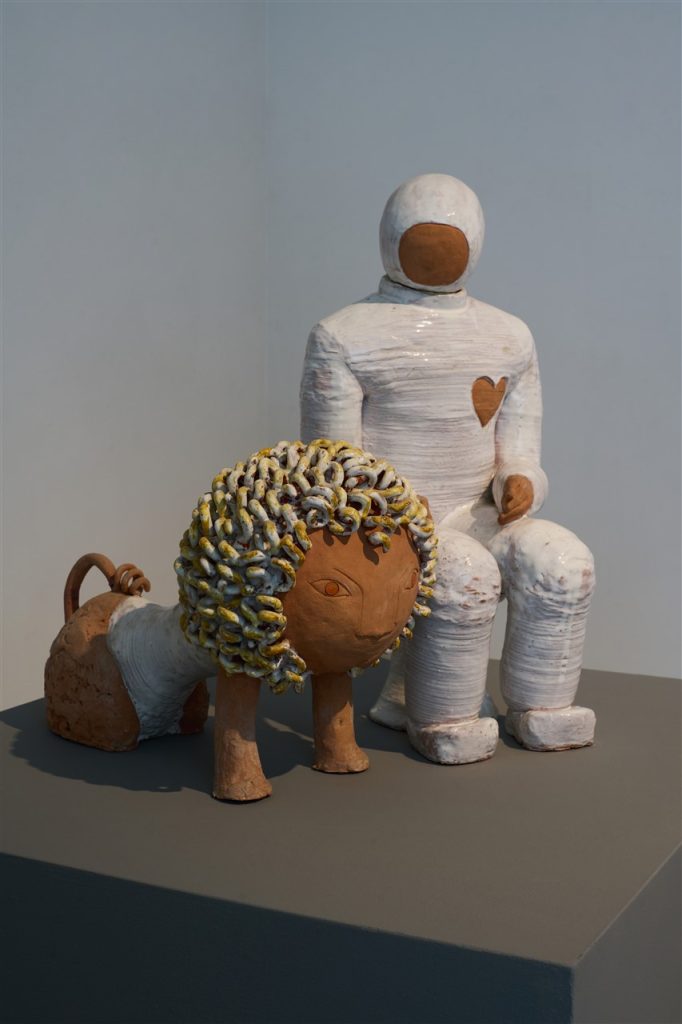
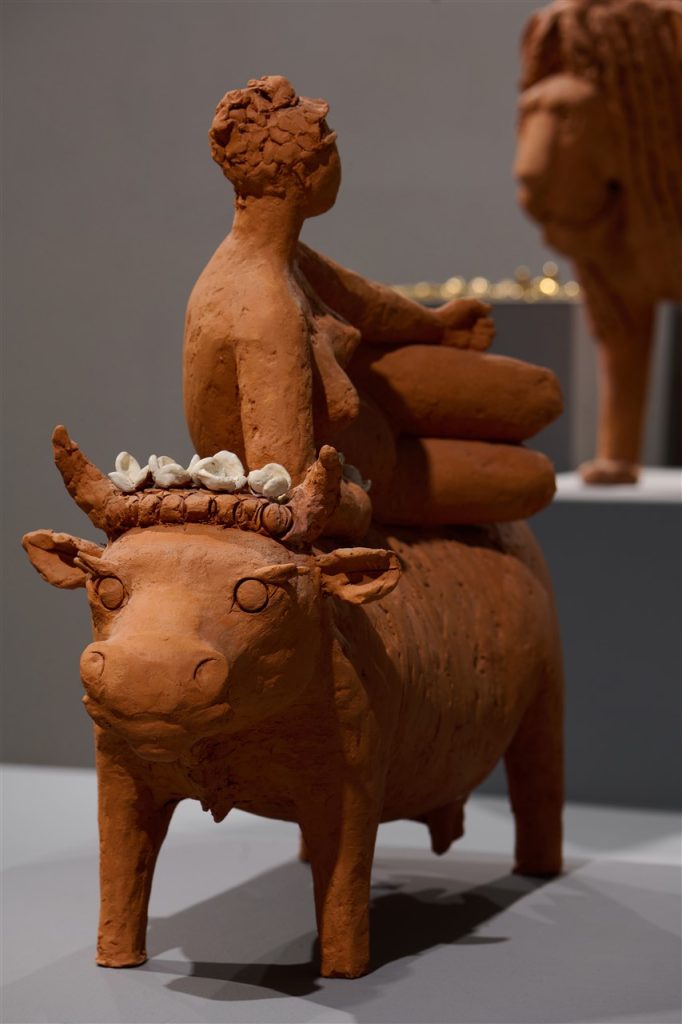
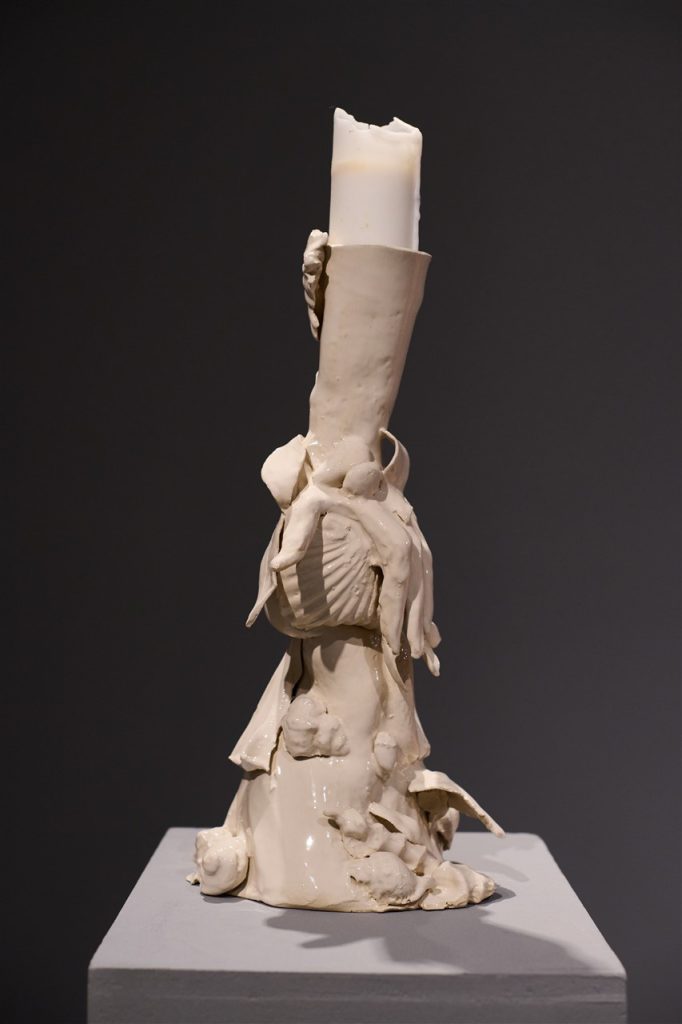
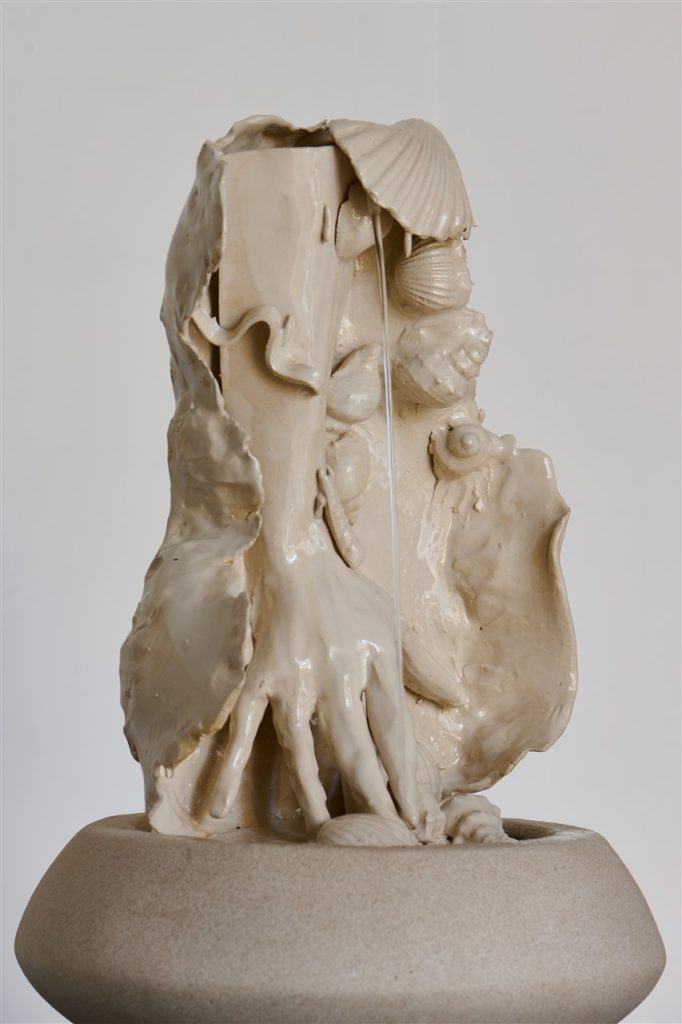
Curator: Avi Lubin
In a setting that to some extent looks like an enlarged model, are displayed the ceramic works of Agi Yoeli and Dana Yoeli, grandmother and granddaughter, including a large lion, a terracotta cat, life-size male feet, a decorative fountain, Ionic pillars, miniature trees and a giant flower. The combination of the works of these two artists and the installation creates a synthesis of a sculptural ceramic environment, a set for a play, a historical museum, and the ruins of an archaeological site. In the past years Dana has begun making ceramic works, a medium that her grandmother specialized in, but it is the first time she examines their connection and the influence of her grandmother on her practice. In a contemporary and liberated installation, she re- reads the body of work made by her grandmother, the inheritance of her family.
Agi (Agnes) Yoeli (1921-2018, Czekoslovakia)
Yoeli studied at the Decorative Arts Academy in Budapest and after the Second World War studied sculpture at the Fine Arts Academy in Prague and then at the Art Academy in Stockholm. In 1947 she emigrated to Israel and in 1949 married Prof. Pinhas Yoeli. Yoeli lived and worked in Haifa and Tel Aviv and was a guest lecturer at the Royal College of Sculpture in Melbourne, Australia, at the Fine Art Academy in Stockholm, Sweden, and at the Wisconsin University School of Art, USA. She exhibited her work in many solo and group exhibitions in Israel, Canada, Europe, Australia, Japan, Turkey, and the USA.
In her work she challenged the characteristics and technology of traditional work with clay while reflecting on the human condition; from the series of friendly, human-like animals through the astronaut families, with a sensitive eye and humorous approach. Her work was made mainly in series: cats, huge fruit and vegetables, Olympic gymnasts at their peak, groups of characters and Victorian pictures (Victoriana), touching in their sensitivity, and a group of sculptures/installations of places and that are situations and situations that are places. Yoeli was free of the big questions posed by the founding makers of Israeli ceramics such as: what defines local ceramic making and what makes it Israeli? Instead of raising these questions, she worked within broader cultural connections, sometimes with a sting and humor.
Dana Yoeli
Dana Yoeli (b. 1979, USA) a multimedia artist living and working in Tel Aviv. Her work mixes different styles and techniques and varies between big site-specific installations, exact pencil and graphite drawings, artist books of cut photographs, miniature maquettes, detailed porcelain plates and large concrete walls. In many of her works, Yoeli presents stories of remembrance and personal memorialization which often appear incoherent and subjective and become the collective ethos of memory and immortalization, functioning as nostalgia, memory and memorial ceremonies.
Yoeli is a bachelor’s and master’s degree graduate of the Bazalel Academy of Art as well as HAW, Hamburg, Germany. Yoeli has exhibited solo exhibitions and projects at the Petah Tikva Museum of Art, Magasin III Jaffa book shop, FRIZE Hamburg, Herzlia Museum, Beit Bialik Museum, CIRCLE -1 Gallery, Berlin, Chelouche Gallery Tel Aviv, Artist Studios Tel Aviv, Beit Hatzayar Jerusalem, Kav 16 Gallery, Dana Gallery Yad Mordechai, Bezalel Gallery Tel Aviv and Tevi Dresner Gallery as well as many group exhibitions in Israel and abroad including the Tel Aviv Museum of Art, Kustraum Kreuzberg/Bethanien Berlin, Artists House Jerusalem, Petah Tikva Museum, Ashdod Museum, Haifa Museum, Gutman Museum, Bat Yam Museum, KUBUS Hanover, GSA Glasgow, and many other important locations.
She received awards including Asylum Arts at The Neighborhood 2023, the Ministry of Culture award for independent artists (2022), the Culture Department of Hamburg City Council award for research (with Suza Bauer) (2019), Mifal Hapais (2017), Ostrovsky Family Foundation (2016), Tel Aviv City Council and Rabinovitch Foundation (2015), Rabinovitch Foundation (2014, 2015), Mifal Hapais for the publication of a book (2013), Schir-IDA Artist Residency (2013), Ministry of Culture young artist award (2012), Noam Shodofsky Prize for young artists (2005), DAAD (2005). Her work is found in private and public collections in Israel and abroad.
Dina Kahana Geller & Roni Packer: Kinky
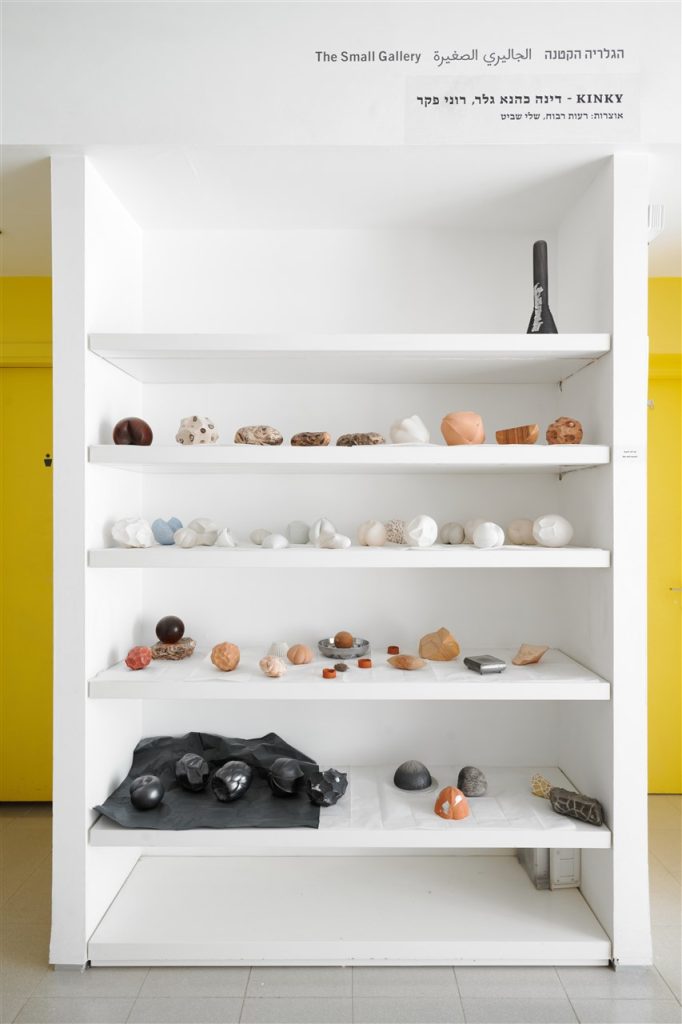
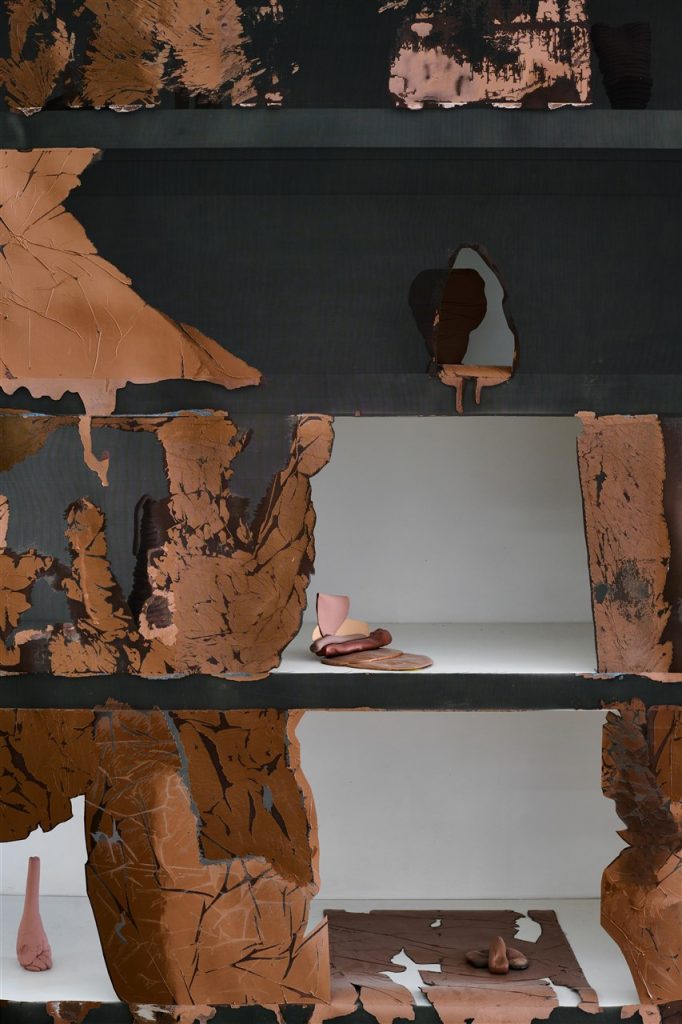
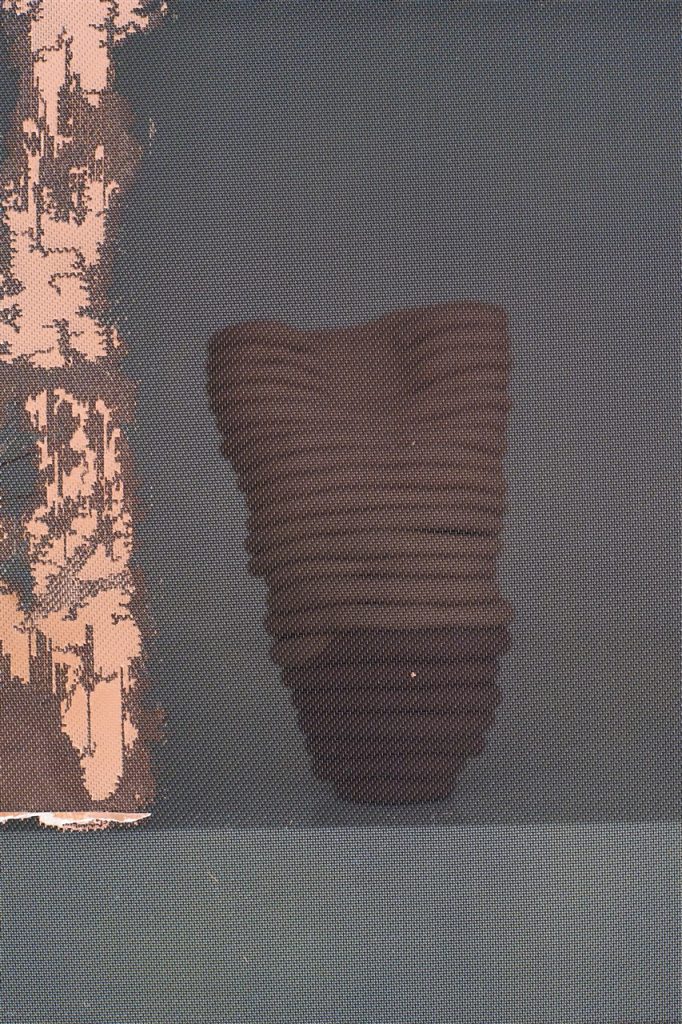
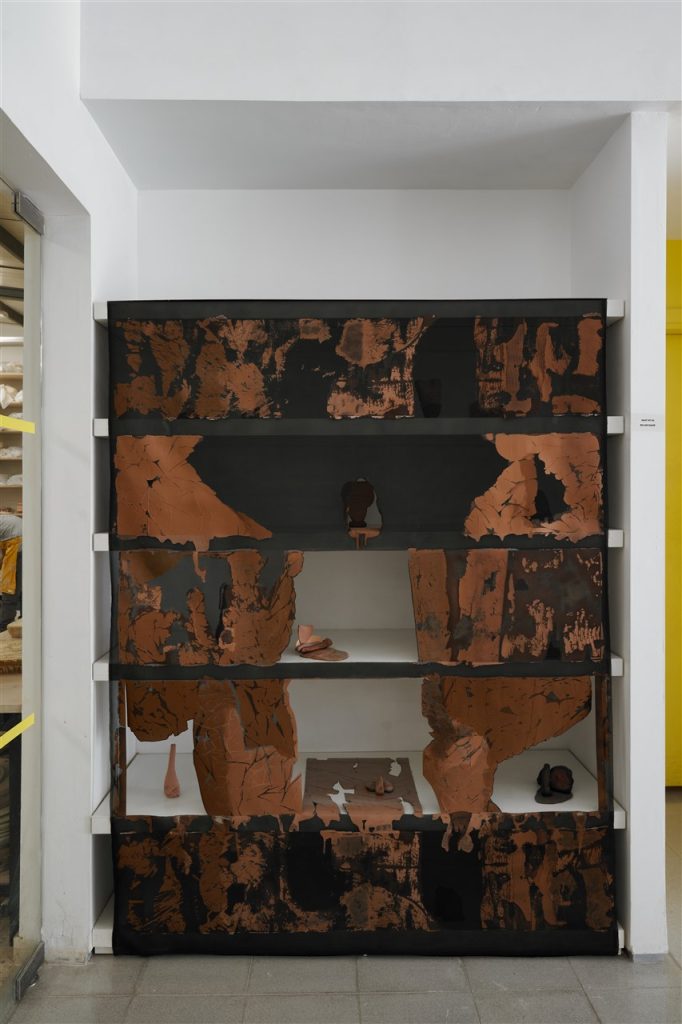
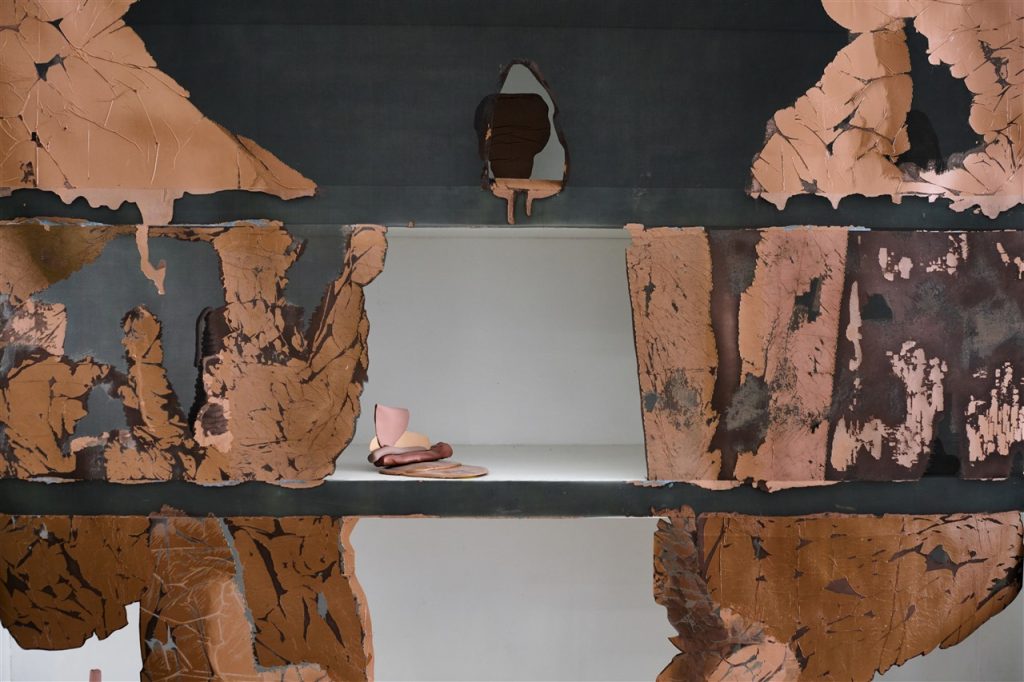
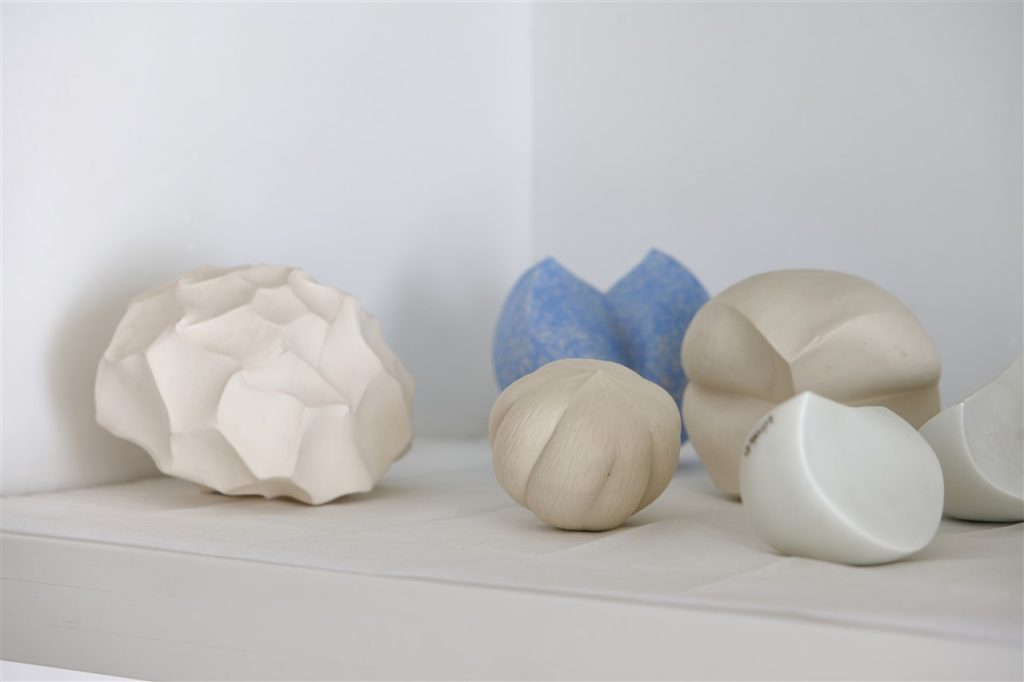
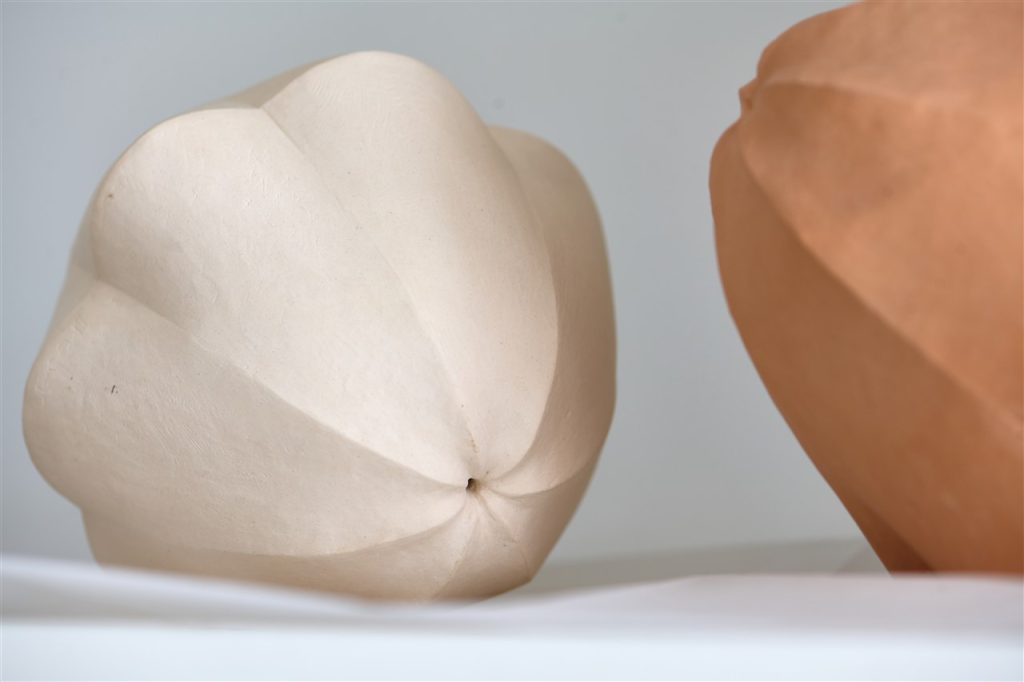
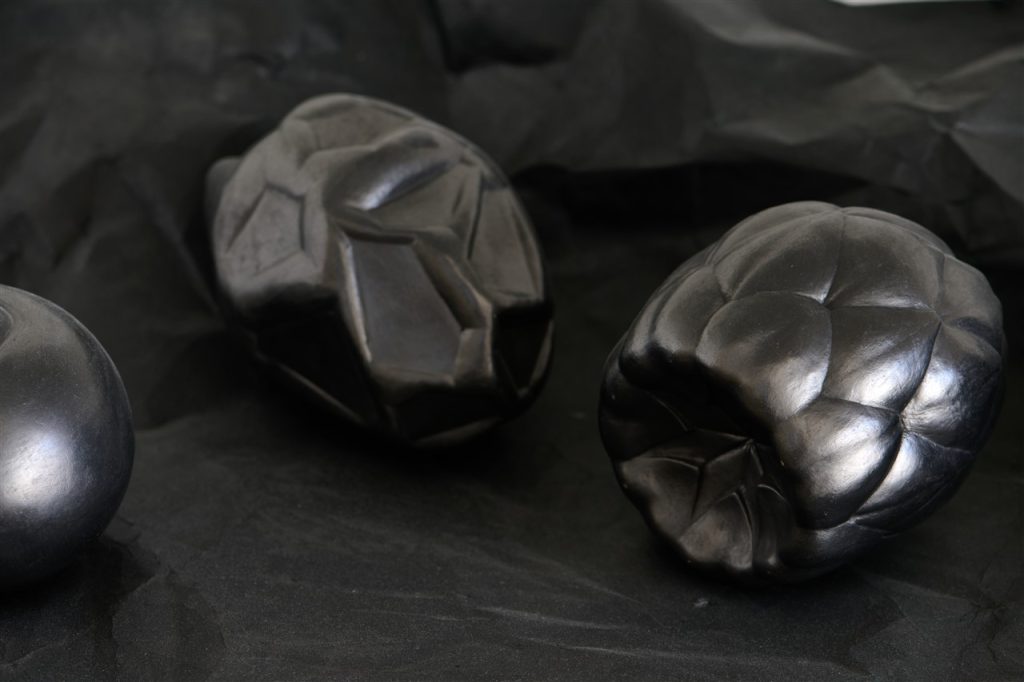
Curators: Reut Ravuah, Shelly Shavit
The exhibition Kinky examines the term through two installations of the artists Dina Kahana Geller and Roni Packer. The term usually refers to unusual or strange passionate behavior and it does not have a translation to a Hebrew word.
In this exhibition the term is also a prism to examine the relationship between the artist and his work. The intimate creative process in the studio between the artist and the material/medium, the product, and the final installation, includes the physical touch with the individual fingerprint, transferred to a new emotional connection, in a space that is not intimate for the maker and the creation and is then transferred to an emotional connection between the object and the viewer.
As part of the work the artists created an environment for the objects displayed: Pecker uses a screen and Geller a protective “bed”. This layer deepens the emotional aspect connecting the artist to her work and the transition to its exposure to the public. The tension created lies between peeping in and bashfulness, and the screen does not block or hide the object but rather envelops it and gives it strength. It is possible to visualize the creative process in the studio as making a sensual world, unrelated to sexuality but connected to an ASMR, Autonomous Sensory Meridian Response, a term researched in the last few years and related to Oddly Satisfying Video (not porno) which creates a response to a visual stimulus through repetitive actions, sounds (knocking, rustling, etc) and visual content. This is a modern world of content that creates different unusualness that is not strange, distorted or perverted. The exhibition Kinky invites the viewer to submit as one would when watching a video, through the movement of Kahana Geller’s object on the folds of the paper and the embroidery of Packer on the screen and the vague amorphic forms. The exhibition creates a space to experience the mediated emotions between the artist and the creation and the observer and the creation.
Kahana Geller and Packer each expose the intimate world of hidden objects. Even though the objects are already in their new world on the shelves of the Small Gallery, they still expose the love of the hand that made them and continue to protect them. In sculpture, says Kahana Geller “the all-embracing idea of the heroic battle with the material is canceled. Art does not provide laws, it is vague, without instructions and without a basic measure.” In her making she submits to the organic-looking objects, with their female, monochrome curves, with smooth surfaces as the soft movement of the hand glides over the clay. They sit on creased tissue paper that complements them and provides a comfortable display. Together they create an installation for the viewer to submit to.
Packer’s works are unusual in the ceramic scene in which they are presented, they are naturally toned plastic-looking figurines. The objects look like body parts but not a concrete organ. On some, the fingerprint is very visible. They might want to look like figurines but do not. She describes her making: “In the studio, I make flattened art and out of the studio, at home I bake. The baked fimo sculptures are amorphic, with undefined color – what was once called skin color and today I will politely call earth colors”.
Dina Kahana Geller was born in 1948 in Kibbutz Lahavot Habashan. She is an artist, sculptor, and painter.
Roni Packer was born in 1982 in Tel Aviv. She is an artist and painter.
Contact
benyaminiccc@gmail.com
Benyamini Contemporary Ceramics Center
17 Ha’amal Street
Tel Aviv 66532
Israel
Photos courtesy of the gallery



